Eero Pro 6e review
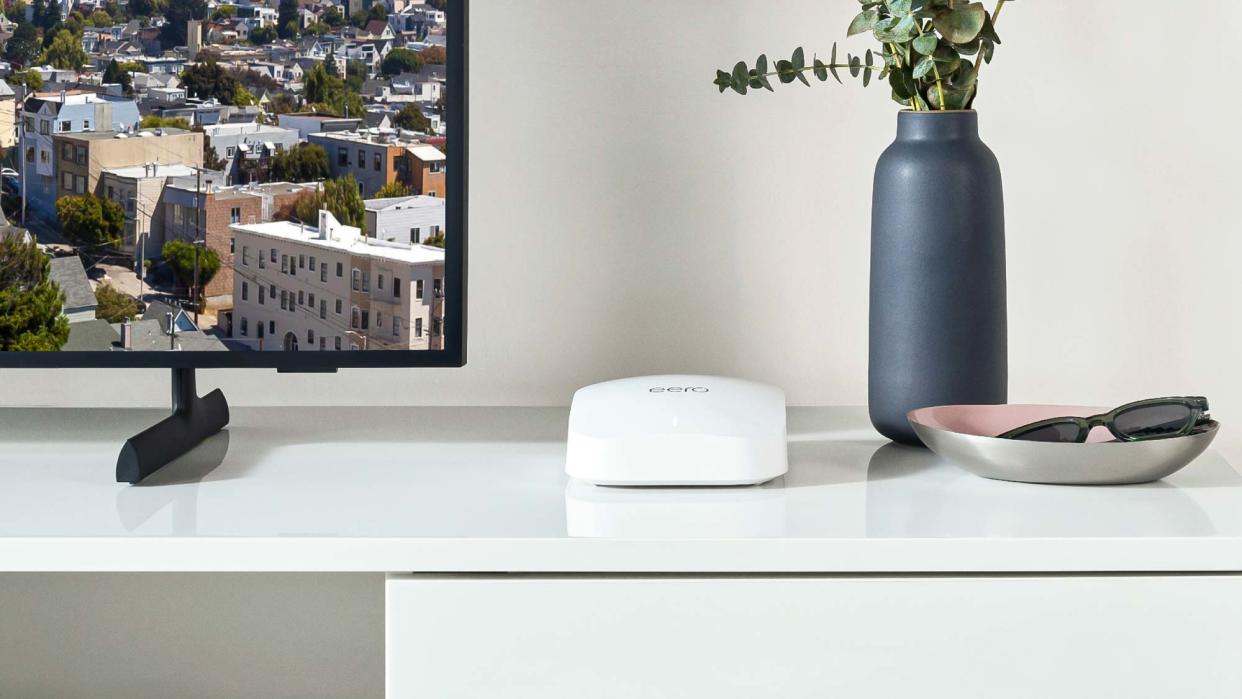
Eero Pro 6E: Specs
Wi-Fi Spec: AX5400
Number of Antennas/Removable: 6/No
Ports: Router and satellites– 2 Ethernet
Processor/Memory/Storage: Dual-core 1.0GHz/1GB/4GB
Wi-Fi chip: Qualcomm Immersive Home 316
Peak 802.11ax performance: 1.144Gbps (at 15 feet)
Range: 85-feet
Size: 5.5 x 5.5 x 2.1 inches
Estimated Annual Electricity Cost: $61.80 (includes host and two satellites)
The tri-band eero Pro 6E has an easy setup routine, reliability with automatic operations and can blanket a home in Wi-Fi. That said, this is not the mesh kit to get if you want top speed or to tweak settings. While the three-pack mesh kit should be enough for the typical house, its single LAN port, lack of Wi-Fi Protected Setup (WPS) and no USB port for network-wide storage are drawbacks.
The eero Pro 6E’s has one thing that puts it ahead of the crowd though: its built-in Zigbee hardware. Able to accommodate a slew of smart home gear, it makes the mesh router your center for connecting locks, lights and cameras.
Does the smart home focus, 2.5Gbps broadband input and the extra throughput from using 6GHz data make this a home networking winner? Our eero Pro 6E review will help you decide if this is one of the best mesh routers.
Eero Pro 6E review: Pricing and availability
The eero Pro 6E picks up where the Pro 6 left off by adding a 6GHz transmission band for an up-to-date tri-band mesh kit. Each Pro 6E unit can cover about 2,000 square feet, according to eero.
The three-pack I tested lists for $699 (for three), $499 (for two) and $299 (for one). The devices are, however, discounted to $560, $400 and $239 respectively. This is roughly half as much as Netgear’s Orbi RBKE963. It's worth noting that now that the more expensive eero Max 7 has been released, this mesh Wi-Fi system goes on sale quite frequently.
Owned by Amazon, eero also sells a variety of other mesh kits that range from the introductory eero three-piece kit for $165 to the $600 Pro 6 three-pack.
Eero Pro 6E review: Design
Just like other members of the eero family, the Pro 6E continues with the familiar white wedge-shaped boxes. At 5.5 x 5.5 x 2.1 inches, they’re huge compared to the first two generations but still tiny next to any Orbi device.
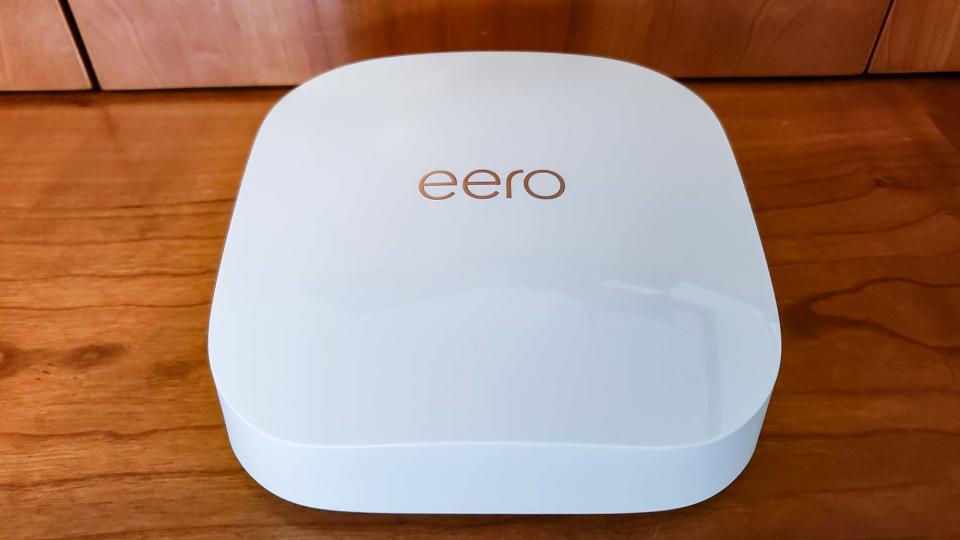
The eero Pro 6E units are identical and are configured as the host router or satellite during setup. They all have a rubber bottom with soft feet that make them easy to place on a bookshelf, on a kitchen counter or even under a desk. Unlike Netgear, eero doesn’t sell brackets for wall mounting, while several third-party companies do, like OkeMeeo’s small plastic shelves.
There’s a single LED light up front that can be turned off. When it’s white, the network is connected but if it’s yellow, there’s something wrong with the power adapter. Red shows that the network is offline.
Based on Qualcomm’s Immersive Home 316 platform that incorporates the IPQ5018 Wi-Fi chip, the eero Pro 6E’s tri-band 802.11AX design can move six streams of data over the 2.4, 5 and 6GHz bands. Its six Wi-Fi antennas are joined with one that’s shared by a Bluetooth radio and the built-in Zigbee hardware. In addition to a hardware network accelerator, the eero Pro 6E has a dual-core 1GHz processor, 1GB of RAM and 4GB of storage space for the system’s firmware, settings and smart home routines.
The Pro 6E can tap into wide 160MHz channels and uses MUMIMO as well as beamforming to support up to 100 clients. While the Pro 6E can use older eero devices as nodes, they are limited to their original speeds.
Overall, the Pro 6E carries an AX5400 throughput rating, up from the Pro 6’s AX4200. The eero Pro 6E uses eero’s TrueMesh technology to automatically streamline data flow using the least congested channels.
The eero Pro 6E’s design lacks the ventilation holes and slots of other networking devices. When in use, the units can get warm but not hot to the touch. They peaked at 104 degrees Fahrenheit, much cooler than the Pro 6 units.
Its 2.5Gbps WAN input port makes the Pro 6E perfect for multi-gig broadband but the single downstream 1Gbps port is a step down from the three to four ports the competition offers. Between the LAN ports is the Pro 6E’s USB C power connector. The package includes USB C AC adapters but the Pro 6E units lack a power switch or a USB data port.
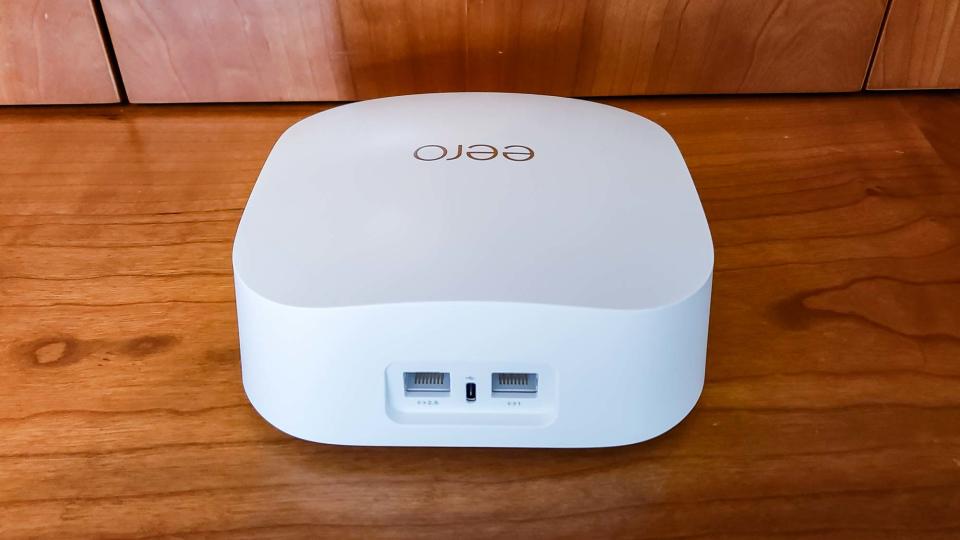
Engineers at eero continue to think that the ubiquitous Wi-Fi Protected Setup (WPS) is too insecure for general use. As a result, WPS is off-limits while almost every other networking company offers it.
The Pro 6E’s optional security software stands in contrast to Netgear’s Armor. While both have a free trial, Armor can cost upwards of $100 a year while eero has two plans available. The Secure subscription includes parental controls, content filtering and can block ads for $2.99 a month or $30 a year. The Secure + plan has a password manager from 1Password, an Encrypt.me Virtual Private Network (VPN) plan for five users and Malwarebytes antivirus software for three users for $10 a month or $100 per year. On the other hand, Armor includes an unlimited Bitdefender Total Security subscription.
Eero Pro 6E review: Performance
Using Ixia’s IxChariot networking benchmark software, we created a simulated Wi-Fi network with 10 data-hungry users in my 100-year-old 3,500-square-foot home and measured throughput using a Samsung Galaxy Book Pro. As was the case with the eero Pro 6, the eero Pro 6E trailed the pack on performance.
Starting at 15-feet, the eero Pro 6E router delivered 1.144Gbps of throughput. Compared to the Pro 6’s 436.1Mbps, this shows the power of adding the 6GHz band. Still, it trailed the ZenWiFi ET8’s 1.232Gbps and the TP-Link Deco XE75’s 1.220Gbps.
With the test system 50-feet away, throughput dropped to 173.3Mbps, demonstrating the short-range nature of the 6GHz transmission. While the throughput for its competitors fell as well, the Deco XE75 and ZenWiFi ET8 were still able to move 299.1Mbps and 287.7Mbps — about 70 percent more data.
At 75-feet, the eero Pro 6E’s 142.9Mbps was close to the ZenWiFi ET8’s 151.8Mbps. The winner here was the Deco XE75, which put out 318.5Mbps – more than double the throughput.
The eero Pro 6E lost contact at 85 feet. This is 15 feet short of the 100-foot-range of the Deco XE75 and ZenWiFi ET8. While the eero Pro 6E was offline at 90 feet, the Deco XE75 and ZenWiFi ET8 provided between 13.8- and 23.7Mbps.
When the eero Pro 6E’s signal had to travel 25-feet across a room and through a wall, it delivered 868.5Mbps. That’s well off the pace set by the Linksys Atlas Max 6E (at 1.008Gbps) and the Deco XE75 (990.1Mbps).
In the upstairs-downstairs testing, the eero Pro 6E continued to lag. With the test system 40 feet away from a mesh node placed a floor above the router, it recorded throughput of 418.0Mbps. That’s close to the 434.0Mbps from the ZenWiFi ET8 but 28 percent behind the Deco XE75’s 579.1Mbps.
This trend continued when I went downstairs and set the test machine up 40 feet from an eero mesh node a floor below the host router. It registered 315.5Mbps, trailing the Deco XE75’s 576.9Mbps.
The kit’s three eero Pro 6E units were enough to fill my house with data. It also passed my saturation test where I set up a MacBook Air and HP Elite Dragonfly to view videos and an iPad to play the BBC World Service News feed as a ThinkPad T470 moves data onto and off a networked RAID storage unit. The audio and video came through without any skips, freezes or artifacts.
While it was moving data back and forth, the eero Pro 6E devices used 16.8 watts of power. If you pay the national average of 14 cents per kilowatt hour, the three pack should cost about $61.80 a year to use, roughly double the cost required to operate its predecessor.
Eero Pro 6E review: Smart home
Under its skin, the eero Pro 6E has Zigbee hardware for setting up and controlling a variety of smart home devices. It uses 2.4GHz transmissions and an integrated antenna to connect with and control Zigbee gear.
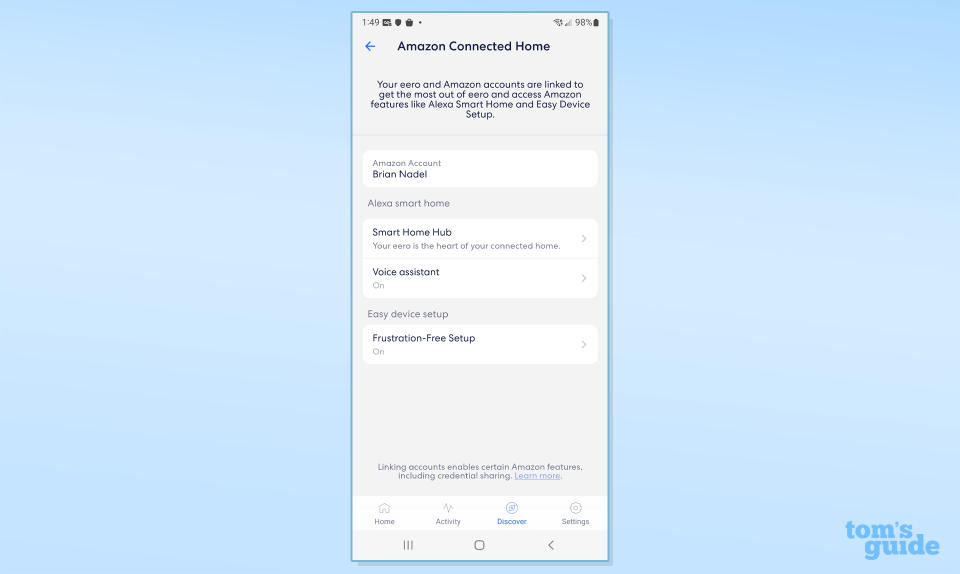
I used it to control a Philips Hue bulb and a Linkind flood light. Unlike some standalone smart home hubs, the eero Pro 6E lacks software for connecting with devices and relies on its app for setup which makes things a little tedious.
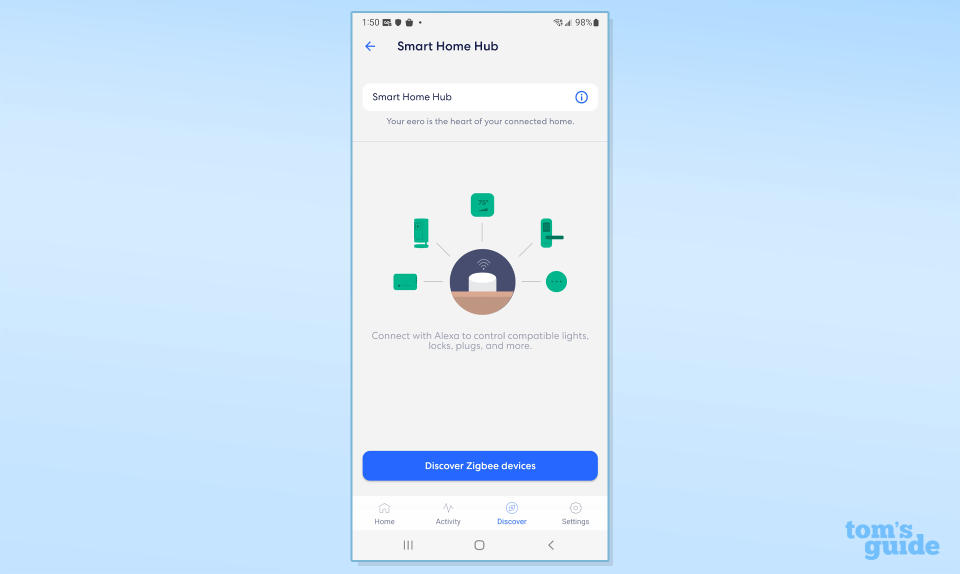
Once the link has been made, the smart home device can use the Alexa app as a controller with voice control. Engineers at eero are also working on incorporating the Matter spec for more universal control.
Eero Pro 6E review: Setup
Eero continues to employ the same set up scheme it’s used for years. One of the quickest and easiest ways to create a mesh network, there are apps for Android and iOS. Due to its Amazon connection, there’s also an app for Fire tablets. The app's step-by-step instructions, illustrations and explanations make it ideal for first time networkers.
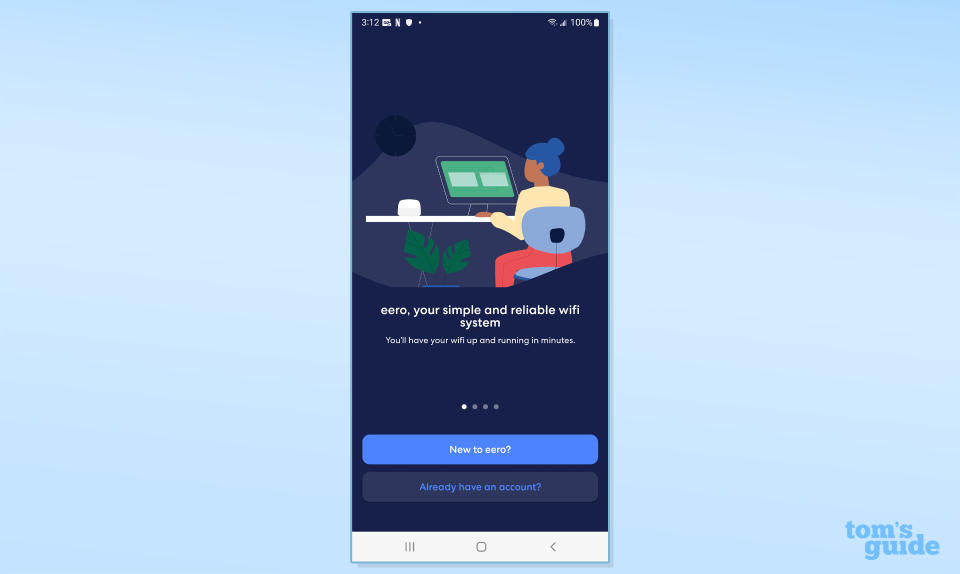
To get started, ensure your device’s Bluetooth is turned on and register with your email or Amazon account. I also needed to name each device’s room using my Samsung Galaxy Note 20.
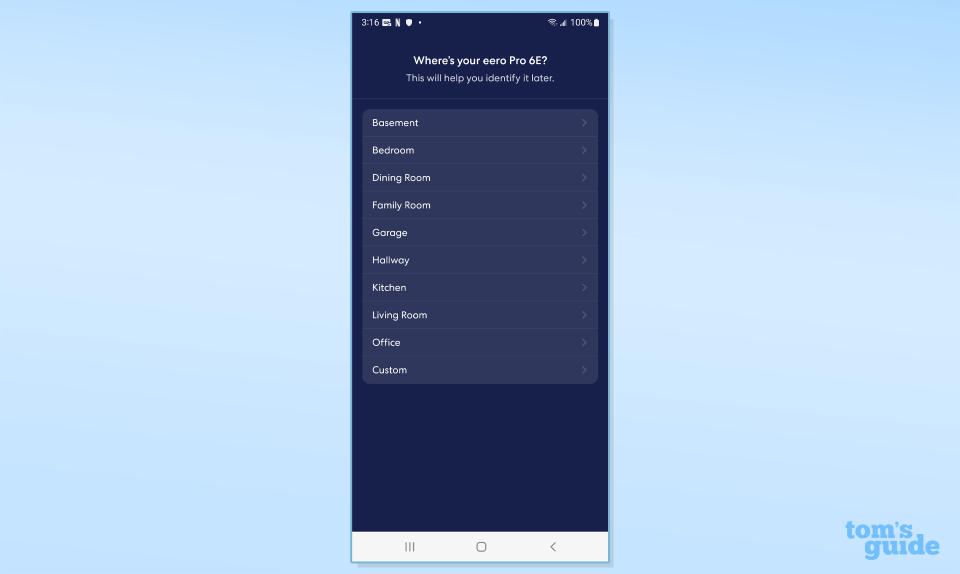
It took 10 minutes and 20 seconds to set up the three eero Pro 6E devices, including a firmware update.
Eero Pro 6E review: Configuration
Like previous eero devices, the only way to change settings is via the eero app but the Pro 6E also supports a Fire tablet app. On the downside, you can’t use a connected browser which often includes more customization options.
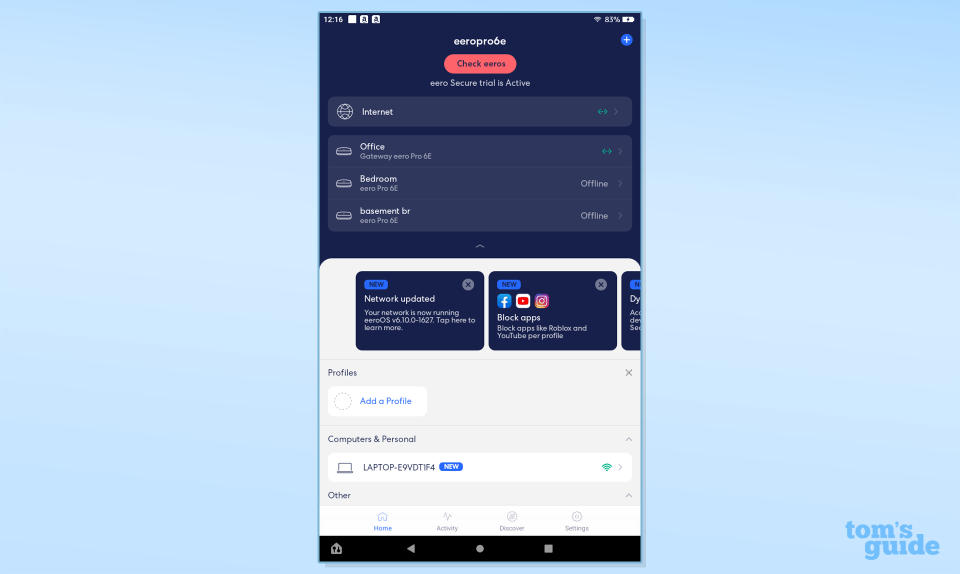
The app’s Home page shows the network’s name, its online status as well as the router’s security. Below are entries for Internet (for getting a speed test) and the eero devices (for seeing their details). Here, the LED can be turned off and the device restarted.
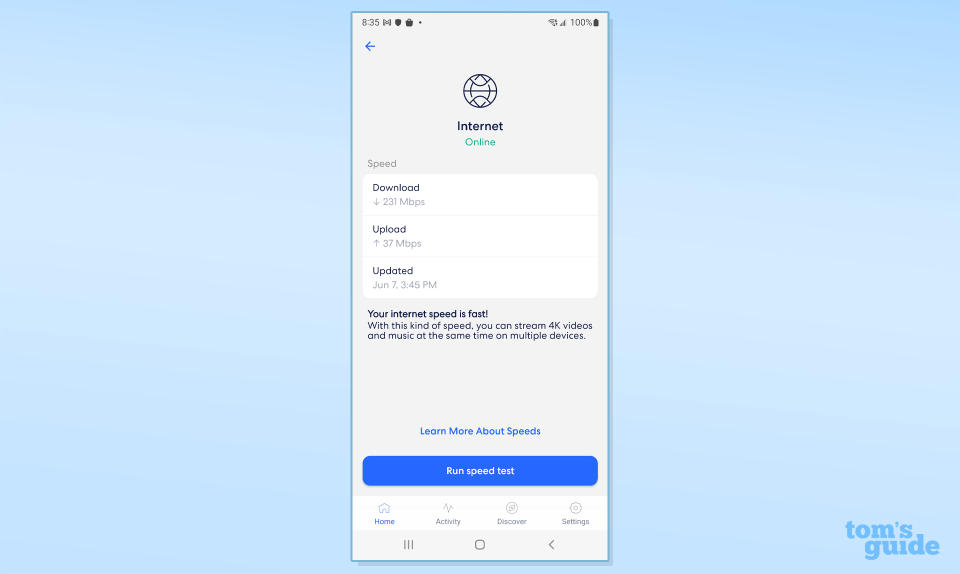
There’s also a scrolling section that lets you update the firmware or get reports. However, the app’s vertical interface displays about one-and a half of these items. There’s no way to use it in landscape mode.
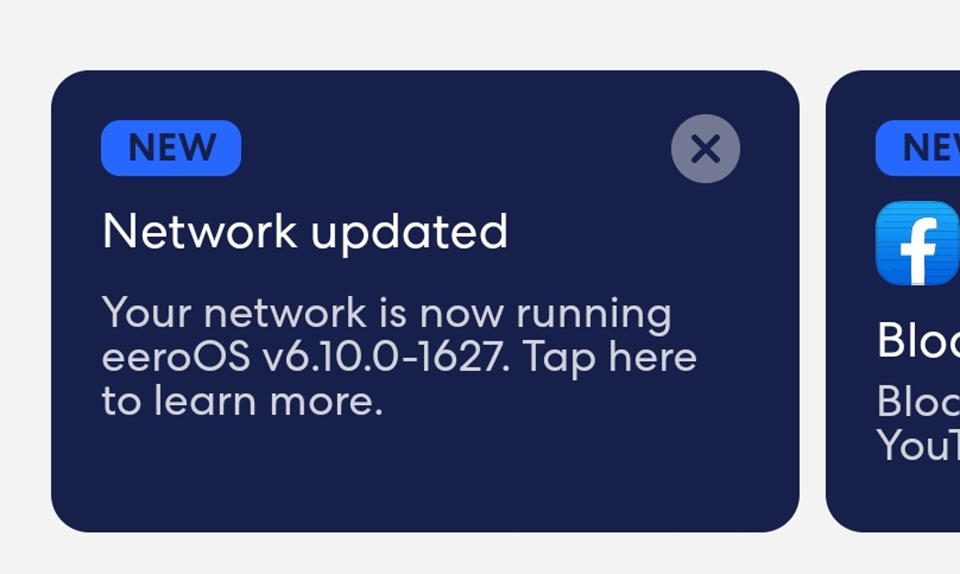
The parental controls include internet scheduling and content filtering, although the latter requires a subscription. Each connected device has a list of who’s online and it’s easy to see the band it’s using and its IP address. Any can be quickly blocked.
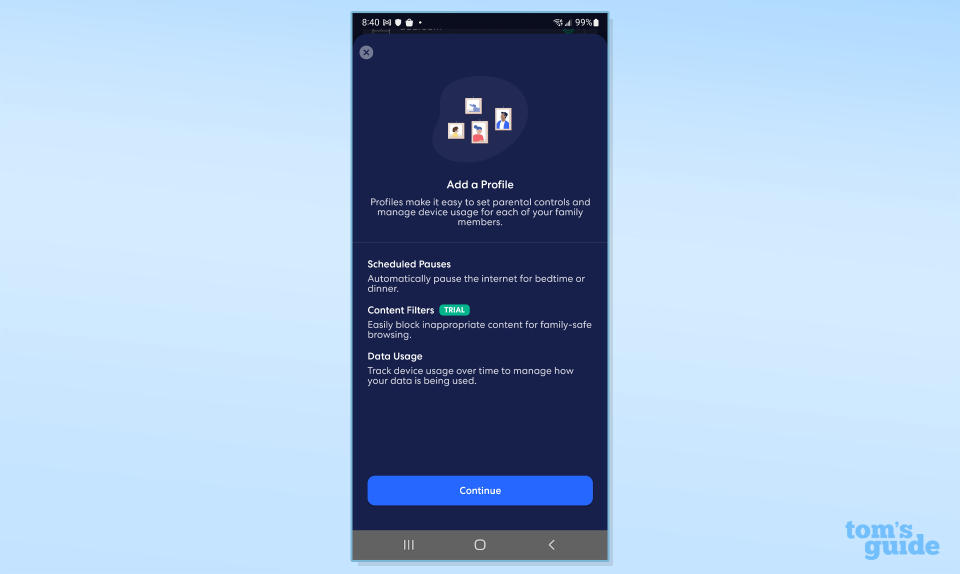
Along the bottom of the Home page is an Activity link to see total data transfers and a summary of security scans. The Discover link leads to security apps, when they expire and smart home Zigbee data. The eero Labs section has beta software for using WPA3 encryption.
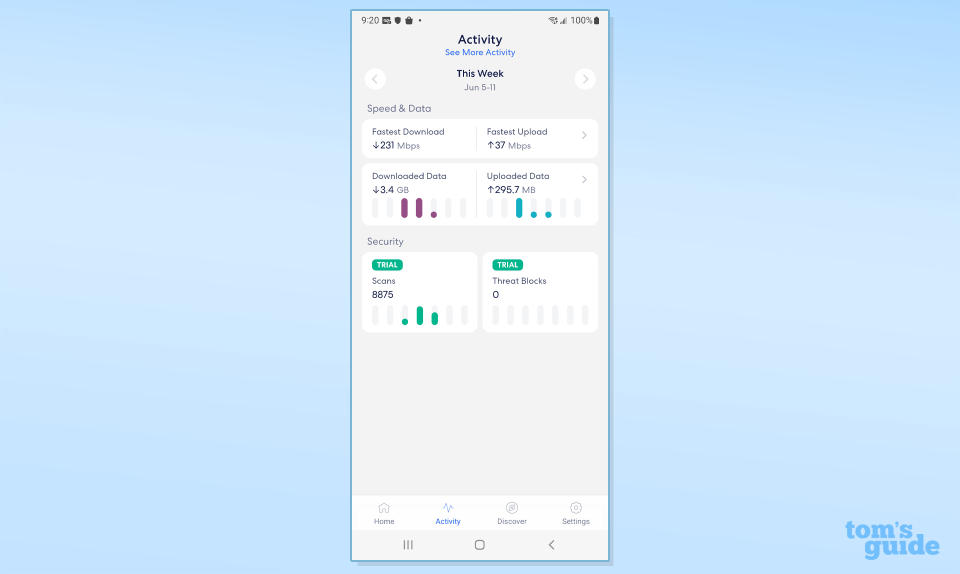
Finally, the app’s Settings has the eero Pro 6E’s major configuration choices. Here, I was able to turn the guest network on or off as well as make changes to the DNS settings and use Client Steering. There’s also a place to invite an outsider to be a remote administrator.
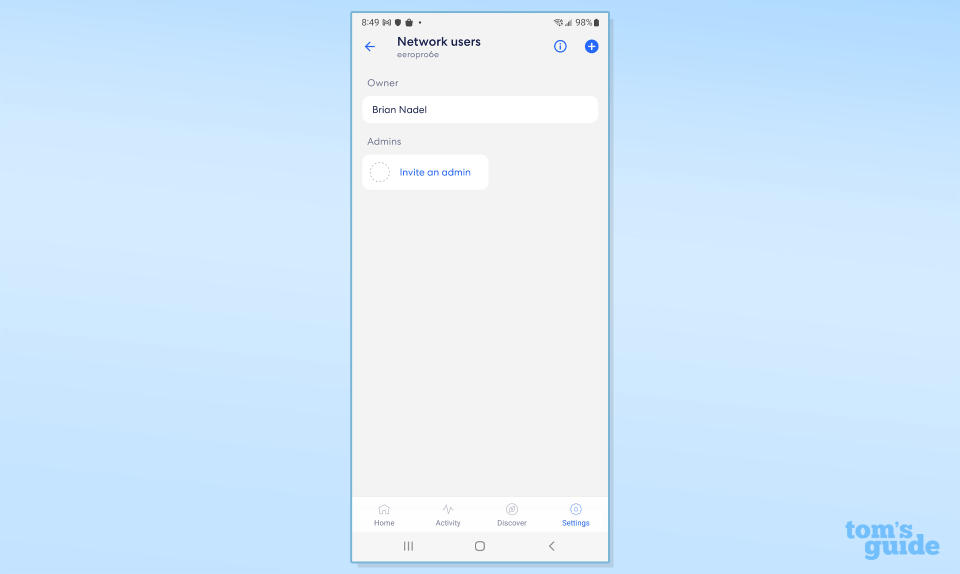
If your home has Ethernet cabling, it can be used to connect eero Pro 6E nodes to the router, making for a hybrid mesh arrangement that doesn’t require any configuration. While the eero Pro 6E’s configuration choices are more than enough for its intended audience, some will be disappointed by not being able to change the CTS/RTS threshold or choose between long and short preamble, both of which are available on the Netgear Orbi RBKE963.
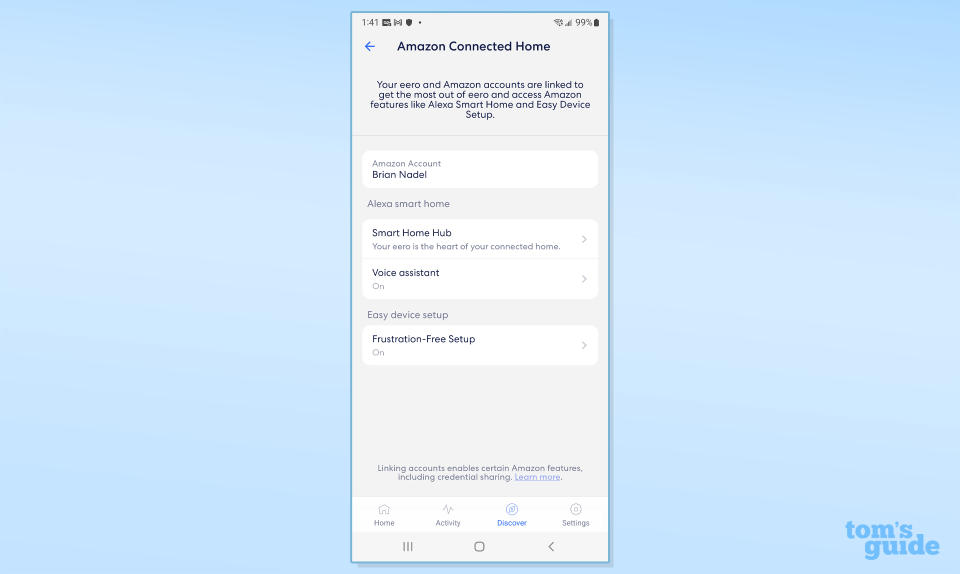
The Troubleshooting section deals with everyday problems, like “My internet is offline” and “My eero’s light is red.” The eero Pro 6E’s Health Check can help figure things out. There are also links to the Help Center and eero support.
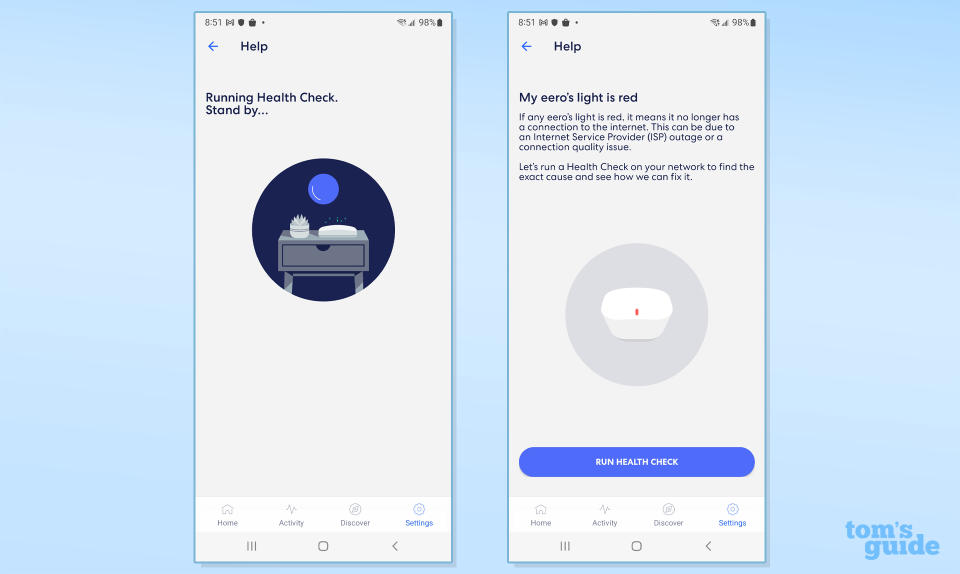
On the downside, you might need to wait because eero’s support is available from 6AM to 8PM PT, not 24/7. The support site has general setup help and how to get a new AC adapter.
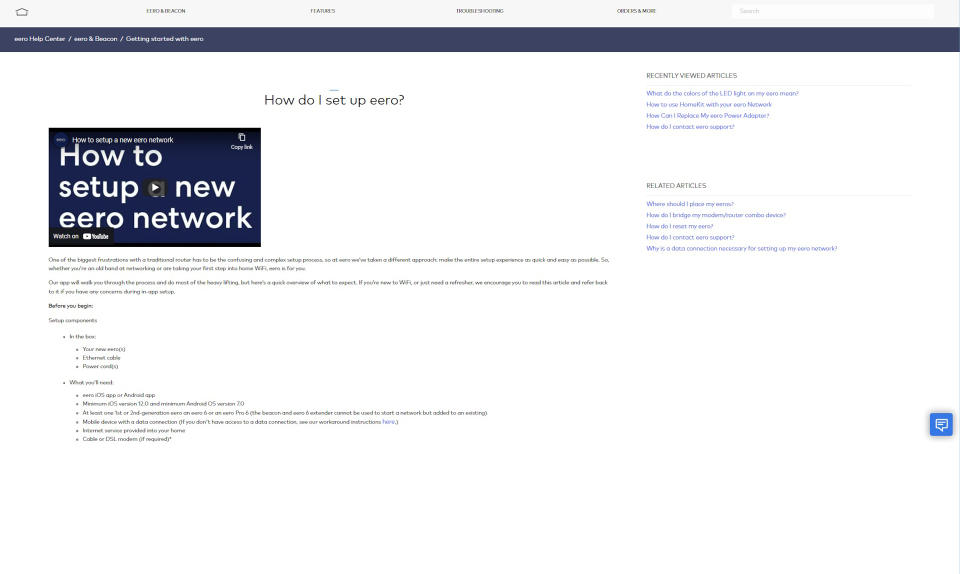
While there’s no manual, the site has lots of topics to explore, like help with updating the network. The mesh kit has a one-year warranty and support for five years after being discontinued, better than Netgear’s 90-day support policy.
An eero Internet Backup is available to eero Plus subscribers and can help you get back online quickly after an outage. Here's how to set up eero Internet backup on the eero Pro 6E.
Eero Pro 6E review: Verdict
It may not be the fastest or longest-reaching mesh kit, but the eero Pro 6E is easy to set up and powerful enough to fill a mid-sized house with Wi-Fi. Its combination of a 2.5Gbps broadband input and 6GHz can provide a gigabit of data per second up close, while its automatic optimization software reduces network congestion.
On the downside, its available bandwidth falls off quickly and its single 1Gbps downstream port falls short of the competition. The Eero Pro 6E’s Zigbee host helps make any house a smart home, but the Pro 6E does without a USB port.
With a price tag of $560, the eero Pro 6E three-pack is slightly cheaper than the Pro 6 model, and less than half the cost of an equivalent Orbi device. It’s an inexpensive way to have an up-to-date network without having to become a Wi-Fi expert.

